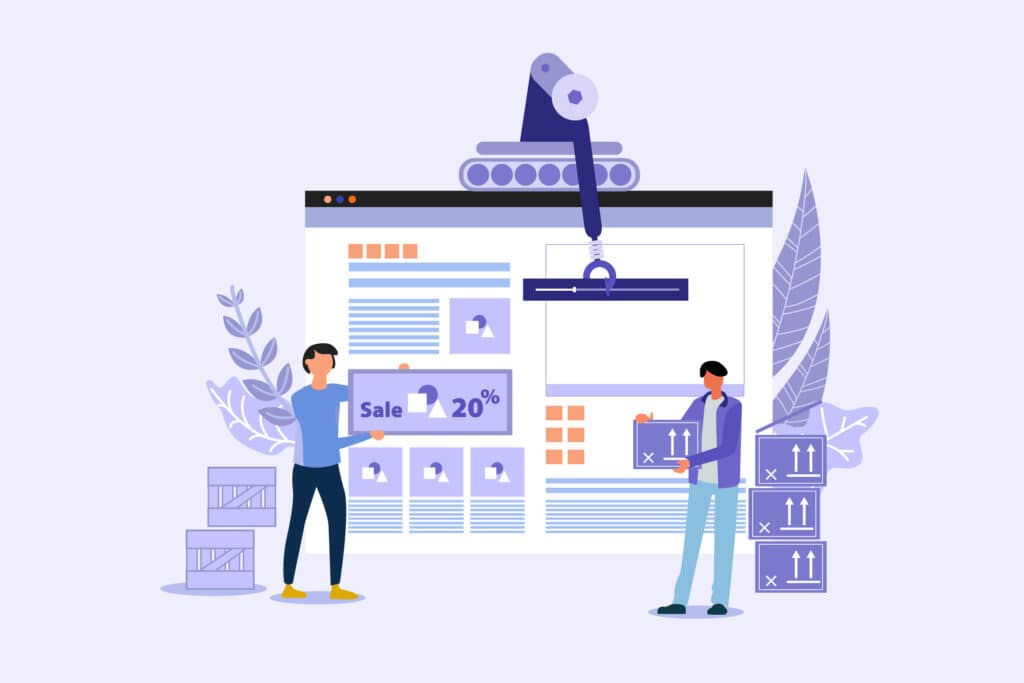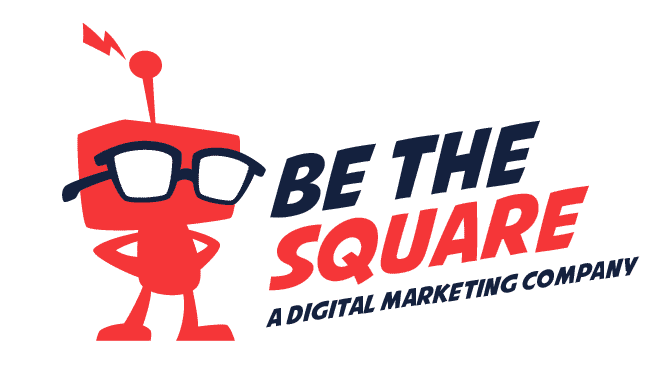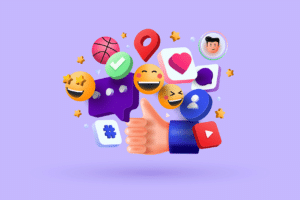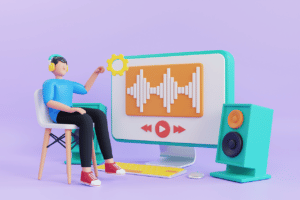Designing a website is no easy task. Not only do you have to come up with something that looks good, but it also needs to be user-friendly and responsive. And on top of all that, you need to make sure it’s keeping up with the latest trends.
If you’re in the process of designing a new website or giving your current one a facelift, here are 5 website design trends you should be keeping an eye on:
- Mobile-First Design
- Minimalist Design
- Flat Design
- Material Design
- Responsive Design
Here are the 5 Website Design Trends to Follow

Mobile-First Design
With over two billion active mobile devices, it’s no wonder that businesses are prioritizing mobile-first design. Mobile-first design is the process of designing websites and applications specifically for mobile devices. This approach puts mobile users first, rather than designing for desktop and then adapting for mobile.
There are a few key benefits to mobile-first design:
- Increased mobile traffic. With more people using mobile devices to access the internet, it’s important to make sure your site is optimized for these users.
- Improved user experience. Mobile-First design ensures that your site visitors always get a hard-to-beat user experience that looks great on any device.
- Enhanced usability and better accessibility. Mobile responsive websites sport a consistent look and feel across the board, allowing your target audience to navigate through all pages faster regardless of the device they log in from, even if they can only use one finger! If we go down into more detail mobile responsive sites are Higher Ranked in Search.
Google has stated clearly that proper (and considered) responsiveness is one of more than two hundred factors in search engine results. As you know, standing out from the crowd and appearing at the top when someone enters their searches is key for getting clicks over competitors’ pages and eventually brand recognition and revenues. Why should Google consider your site if it does not open up easily on smartphones? Get an SEO expert to test your website now and see what needs improvement or tweaking to help you appear first On The Page Sound Design – As pixels are smaller on mobile phones; make sure there are no overlapping elements or ones that cannot be seen with the naked eye.
Minimalist Design
Minimalist website design is all about creating a clean, streamlined, and uncluttered user experience. This type of design is focused on delivering the bare essentials – nothing more, nothing less.
While minimalist design can be applied to any type of website, it is particularly well-suited for eCommerce sites. That’s because online shoppers are bombarded with too much choice and too much information, which can lead to decision paralysis.
A minimalist eCommerce site design can help to alleviate this problem by only presenting visitors with the essential information and products they need to make a purchase. This setup leads to higher conversion rates and more sales, while also presenting the users with a seamless experience on all products.
A minimalist eCommerce solution needs to have a simplistic design that responds to the user’s purchase intent effectively by allowing them to see what they want to buy. You can implement interactive elements into your designs that enable shoppers to click on specific product images and learn more about them without getting overwhelmed with too much information.
It’s important not to overload pages with unnecessary visual elements as this will only serve as distractions. Keep the overall appearance of your store clean, concise and easy on the eyes.
Flat Design
Flat design is a type of design that is characterized by its use of simple, two-dimensional shapes, bright colors, and a minimalistic layout. This type of design became popular in the early 2010s as a response to the skeuomorphic design style that was common at the time.
Flat design is often used for websites and apps because it is easy to understand and use, even for first-time users. This type of design is also thought to be more modern and stylish than skeuomorphic designs.
If you are considering using a flat design for your website or app, there are a few things that you need to pay attention to. Below we have listed some points which will help you avoid common flat design problems and allow you to create a better user experience.
1. Keep It Simple
One of the most important aspects of flat design is simplicity. When using this style, you must keep your designs clean and clutter-free. This will help your users focus on the content and functionality of your website or app, rather than be distracted by unnecessary elements.
2. Use Realistic Graphics
Another important aspect of flat design is realism. When using this style, it is important to use graphics that look realistic and are not too cartoony. This will help your users feel more engaged with your website or app and make it more enjoyable to use.
3. Avoid Over-using Flat Elements
While flat design can be very effective, it is important to avoid overusing flat elements such as buttons and icons. If you use too many flat elements, your website or app may appear “flat” and boring.
Material Design
Material Design is a design language created by Google. It’s based on the principles of good design, which include things like user-centered design, making things easy to use and understand, and creating a visual hierarchy.
One of the goals of Material Design is to make sure that users have a consistent experience across all devices, whether they’re using a phone, tablet, or desktop.
There are a few key characteristics of Material Design websites:
- They have a clean, flat design
- They use a lot of white space
- They use Google’s Material Design icons
- They use bright, primary colors
Responsive Design
Responsive website design is an approach to web development that makes sure your website looks and works great on any device, from a desktop computer to a mobile phone.
The key to responsive design is using CSS media queries to change the way your website renders at different screen sizes. This allows you to create different versions of your website that are optimized for different devices.
Responsive website design is important because it ensures that your website is accessible and easy to use on any device. It also helps you improve your search engine ranking since Google now uses mobile-friendliness as a ranking factor.
Conclusion
In this article, we looked at five new website design trends that you should be keeping an eye on. These trends are all about creating a more user-friendly experience for your website visitors. If you want to stay ahead of the curve, like and comment on this article to let us know which trend you are most excited about!





